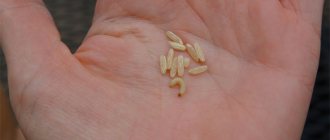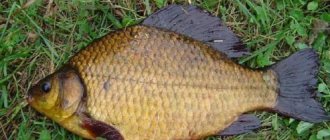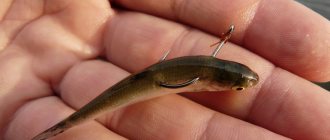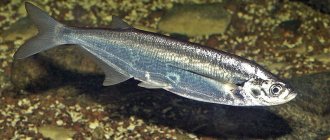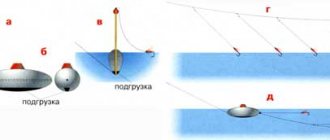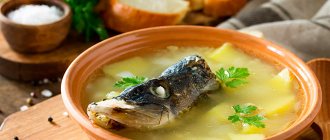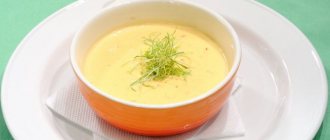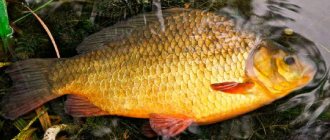House flies and house flies are one of the most annoying and harmful winged insects. They prefer to live in close proximity to humans.
Fly
Thanks to their short life cycle, they actively reproduce and leave behind huge offspring.
Fly larvae (maggots) also pose a certain danger. How to get rid of fly larvae - the most effective methods: chemicals and folk methods.
You can also read our article: Features of the structure of the housefly
About maggots
We most often suffer from flies in the summer, in August and July. They begin to multiply.
About the appearance of an insect
Fly development:
- Eggs. These insects are prolific. A fly can lay up to 150 eggs at once. Flies hide them where there is a lot of garbage and manure, and it is humid. But the female can choose another place for them: kitchen waste, meat and fish, rotten vegetables.
- Larvae. After 8 hours or a day, a larva hatches from the egg, the same maggot. She remains in this environment and eats spoiled food. In the larval stage, the insect lives from 5 days to 2 weeks.
- Doll. The maggot matures and the larvae begin to pupate. This takes 3 or 4 weeks. First, the insect moves to a dry place where it becomes a pupa.
- Fly. Their pupae are hatched by a fly that lives for only a month. But even during this time, one insect (female) lays from 500 to 2 thousand eggs. And the process of development of the fly begins again.
Why are fly larvae dangerous?
Why is it so important to fight fly larvae, why are they dangerous? These insects are carriers of pathogens of many intestinal diseases. But that's not all. If you buy meat and fish at the market, where they are not stored in the freezer, green flies will lay eggs in them. Larvae emerge from them. If you eat 1̶ 2 maggots along with these products, nothing bad will happen, although it is unpleasant. They will leave the body.
But if a person has swallowed a lot of insects, then his health will deteriorate sharply: his stomach will hurt, he will feel sick, vomiting, diarrhea will appear, and he will suffer from itching. Doctors advise taking a saline laxative immediately. Maggots are not that dangerous for humans. But those who vacation in Brazil, Mexico, Africa should be afraid of local flies; their larvae live in the human body and eat it. Therefore, in the tropics you cannot run barefoot, dry clothes under trees, and you must constantly use repellents.
How to properly place maggots on a hook
There are certain situations when fishing when you need to use various techniques for attaching larvae. For example, fishing for carp, bleak, bream, roach, high-speed or delicate fishing.
Classical placement of maggots on a hook in most situations, this is the technique used. The maggot has pseudo-eyes or spiracles. Underneath them there is a small fold of skin, into which the hook tip is caught, which remains open. This makes it possible to attach several maggots to a hook for catching large fish.
Read other ways to put maggots on a hook, pros and cons, and fishermen’s mistakes in other articles on our fishing site.
Insect extermination
How to get rid of larvae? Those insects that have already settled in the house, in the basement, must be destroyed. To avoid re-infection, do not forget about preventive measures. Let's look at several ways to help remove maggots and get rid of them.
Boiling water
You don’t want to be poisoned by chemicals, but you need to kill maggots that are crawling around the house? Use boiling water. First, boil water in a large bowl. Treat the bucket in which you store garbage with this boiling water to kill eggs or larvae of flies. Before that, take out the trash. As a preventive measure, pour a little vinegar into the water so that the bucket no longer attracts flies. They don't like the smell of vinegar.
Maggots also appear in sewer pipes if there are pieces of rotting food left there. To destroy them, pour boiling water down the sink. You can pour water with vinegar. Scald your sink and bucket with boiling water every 7 days to prevent insects.
Removing larvae from the kitchen and rug
You didn’t have time to process the trash can in time, and maggots spread throughout the kitchen. How to get rid of them? Buy an insecticide containing carbamate, permethrin, cypermethrin. The safest product that may contain one of these substances is shampoo used for animals. But before you buy the drug, study its composition. As soon as you bought the insecticide, dilute it in water in a ratio of 2:1 (water and poison) . Pour the resulting solution into a spray bottle and spray the kitchen surface with it. All that remains is to collect the larvae and throw away the garbage. After treatment, wipe the kitchen surface with an antibacterial agent, and then rinse everything thoroughly using warm water.
To remove larvae from carpets, buy or borrow a carpet steam cleaner. Then go to the store for the insecticide solution they sell for your steam cleaner. Before using the poison, read the instructions. Make sure it is not harmful to humans or pets. Mix insecticide and hot water and pour into steam cleaner. Treat the carpet at least 2 times to destroy all parasites.
Destruction of larvae on the street
Often maggots start on the street: in liquid waste, cesspools, etc. If you do not want to suffer from an infestation of flies, you need to fight their larvae. The universal method is to remove garbage and waste, but in private homes this is not always possible. Therefore, constant treatment of garbage heaps with larvicides is required. It starts in May, and for those who live in the south, even earlier. You will treat the garbage piles with solutions or emulsions that form a film on their surface. The larva will emerge from the depths to the surface and die after contact with the insecticide.
Means to destroy fly larvae:
- Aqueous emulsion of dicresyl (0.3-0.5%) or trichlorvos (0.2%);
- Karbofos solution (1%) or an aqueous solution of chlorophos (2%);
- Aqueous emulsion of dichlorvos (0.5%).
For processing, use only fresh solutions, just prepared. To make them, the products are dissolved in water at room temperature and the area where larvae accumulate is treated with the solution 2 to 5 times a month. The hotter the summer, the more larvae will appear, so the number of treatments is increased. For one square meter you will need from 0.2 to 1 liter of solution.
To get rid of insects, you can use other means, such as iron sulfate. To do this, dissolve 800 g of vitriol in a bucket of water and pour in the habitat of the larvae. One bucket of such a solution is suitable for processing manure, which is produced by one horse during the day. Or take 1 kg of borax and 1.224 kg of calcium boron and treat 1 square meter with them. m. manure. Sprinkle it with powder and pour water over it.
Prevention
Even if you were able to destroy the larvae, this is not a guarantee that there will be no re-infestation. Flies fly everywhere, they can easily get into your house or fly into your garden plot, and you will have to start all over again. This is why preventive measures are so important.
- Cleanliness in the house. Do not store rotting leftover food in your apartment; throw it away immediately. Always take out the trash and make sure that the bin does not overfill. Place leftover food in bags and then put them in the trash. Don't forget to cover it with a lid.
- Don't let flies into your house. Hang nets. If they do get to you, insect repellent tape will help.
- Check products. Many people store food at home or store it in the cellar. Check your supplies regularly. If they start to rot, throw away the spoiled food.
- Concrete the area around the latrine or cesspool (1.5 m). If it is a non-sewered restroom, clean it once a day and disinfect it using a bleach solution (10%).
- Plants will also help fight flies. Plant geraniums on the windowsill, the smell of which flies do not like. Plant elderberry or bird cherry in an area near a latrine or piles of manure.
hozuyut.ru
Who are maggots and where do they come from?
Not everyone knows that maggots are fly larvae. In order to understand how they appear in the toilet pit, you need to consider the life cycle of this insect.
A house fly lays approximately 150 eggs at a time. To provide food for her descendants in the future, she does this using some kind of organic waste. During her entire short life, which lasts 20-30 days, a female fly is capable of leaving about 3,000 eggs. They are small in size and very difficult to notice.

Life cycle of a fly
A country toilet is a place where human waste products accumulate, that is, a very favorable environment for the development of fly larvae. At a favorable temperature, after a day, larvae appear from the eggs, resembling a white thread. This is the first stage of the larva, it is called feeding, lasts about a week. At this time, filamentous larvae require a lot of heat and moisture, so they penetrate deeper into the waste.
In 5-7 days, the filamentous larva greatly increases in size (sometimes 800 times) and acquires a brown tint - this is maggot. Then the larva pupates and after about a week, a fully formed fly appears. During the first few days she cannot fly due to the weakness of her wings, so she continues to live next to other maggots. The adult leaves the cesspool and the cycle repeats.
Lifestyle of a housefly
The life of a housefly is closely connected with humans. Its body size is about 10 mm and its weight varies depending on its condition. A hungry individual weighs approximately 12 mg; after eating household supplies, waste, and before laying eggs, the weight increases by 1–2 mg. These annoying insects can only reproduce if they are in close proximity to people. They are not adapted to life in the wild.
Where does it come from and where does it live in the apartment?
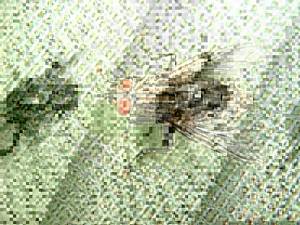
In an apartment or house, flies usually appear in the warm season. They penetrate residential premises in two ways:
- Through ventilation shafts, windows, open doors and cracks. They always live near their place of birth, so they are in close proximity to home. They are especially frequent guests in private houses, next to which there are outbuildings, such as a barn, a pigsty, a chicken coop, and a toilet.
- With a bouquet of wildflowers or the harvest. If fly larvae were on vegetables or fruits brought into the house that were not washed immediately, then soon adults will emerge from them.
What does an insect eat?
The housefly is active during the day, constantly moving in search of food and a place to lay eggs. Many foods serve as food for the house fly, so it is a polyphage by type of nutrition. Insects prefer liquids. They love to enjoy fruit juice, syrup, and honey. If there is no liquid food, they eat cookies, bread, sausage and other foods from the table. The structure of the oral apparatus does not allow them to bite through human skin, so they do not feed on blood.
All food is first digested and only then swallowed. To do this, the insect introduces a special secret into it. The larvae of house flies also feed. Food digested from the outside is easily absorbed by the mouth.
How houseflies reproduce: life cycle from eggs to adults
The life cycle of flies includes 4 stages. The imago becomes ready to reproduce 24 hours after the pupa opens. Females lay eggs; they can produce up to 120 eggs per day. To do this, they choose rotten food, garbage pits, compost and manure heaps. Fly eggs mature in this environment from 8 to 24 hours. Then they hatch into larvae called maggots, which look like small white worms.
The larvae feed on the mass in which the female housefly has laid a clutch. They avoid sunlight, so they tend to burrow deeper into this mass. The worms actively feed, experience three molts, grow and pupate. The duration of the larval stage of the cycle ranges from 5 to 25 days. In the pupa, maturation lasts about 5 days. After this, the imago appears.
The average lifespan of a winged pest is from 8 to 30 days. The longest-living generation is the one that appears in the fall; it overwinters and wakes up in the spring for further reproduction.
How to get rid of maggots in a country toilet
Maggots themselves are harmless creatures. But the flies that appear from them are very annoying and unpleasant creatures. The surface of their paws is covered with small hairs, onto which parasite eggs and pathogenic bacteria cling.
Flies fly everywhere, including in human homes, landing on kitchen utensils and directly on the food itself. Anything that previously stuck to the insect’s legs can easily enter the human body and cause disease. That is, flies are malicious carriers of infections. Therefore, it is better to try to destroy them in advance.
Attention! Fighting flies and their larvae is quite difficult and no product can give a 100% guarantee.
Their chemicals are suitable:
- Bleaching. This substance is very toxic. Capable of destroying larvae and driving away adults. Dry bleach is poured directly into the cesspool. A significant drawback is that the smell is too strong and toxic.
- Aerosols. Special chemical compounds that are sprayed indoors. After treatment, the toilet must be closed for several days.
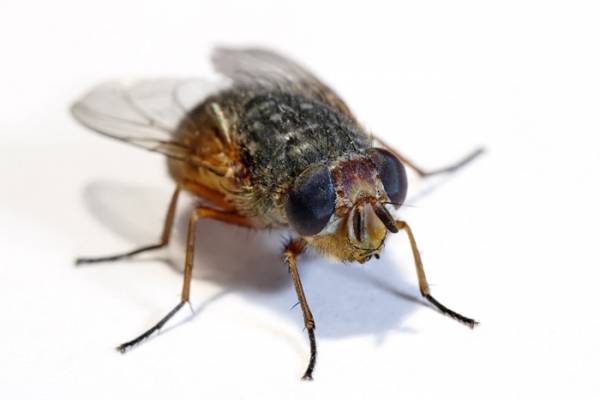
Chemical insect control agents can be dangerous to humans
- Insecticidal powders, which can be purchased in specialty stores. They are poured into the pit itself and scattered around it.
Attention! The use of chemicals can cause great harm to human health.
Biological drugs . These are special liquids or powders that are bacteria of a certain type. Such products are added directly to the waste pit and quickly decompose it into water and inorganic substances. Accordingly, flies stop laying eggs in such an environment that is unsuitable for them. A very big advantage of such drugs is their absolute harmlessness. To this you can add the elimination of “toilet” odors.
Physical means of struggle. These include sticky tapes that can be hung in the toilet, sealing all cracks, and installing mosquito nets.
The “seat” itself in the street house should be tightly closed with a lid. All these measures will become a significant barrier to the penetration of flies into the toilet and, accordingly, they will not be able to lay eggs there. You can try pouring boiling water over the maggots in the pit. This will kill them instantly. In this case, no harm will be caused to the environment.
Justification of a commercial idea
The agricultural sector is one of the main polluters of the environment. Organic waste from livestock farms causes enormous damage to soil and water. Artificial breeding of maggots not only solves the problem of waste disposal, but also allows you to obtain a lot of useful products:
- Live biomass of larvae, which can serve as food for farm animals
- An indispensable fishing bait of animal origin
- Zoogumus is a very valuable fertilizer that stimulates the growth and development of plants, increases productivity, promotes soil reclamation and frees it from heavy metals.
- Flour (a product of processing dried maggots), which in its properties is several times superior to meat and bone meal, is used as an additive for combined feeds
Note: larval biomass is especially effective when breeding fish species such as carp and trout.
As practice shows, if maggots are introduced into the diet of fish, the survival rate of fry increases, the risk of disease decreases, and individuals gain weight twice as fast as usual. In addition, flour obtained from dried fly larvae is a raw material for the production of oncology drugs and is widely used in cosmetology. There are only a few enterprises in Russia engaged in breeding maggots on an industrial scale. That is, this niche is practically unoccupied. The low level of competition, the absence of the need for large start-up and ongoing investments, as well as ample opportunities for selling finished products make this business idea relevant and promising.
Folk effective means of combating maggots and flies
Basically, folk remedies for insect control are harmless to humans and other inhabitants of the yard. And they don’t always destroy flies, but scare them away.
- It is known that flies cannot stand the smell of alcohol. Therefore, vodka sprayed from a spray bottle in the toilet will make the insects fly away. Vinegar works the same way.
- You can spray water with essential oils from a spray bottle. Flies do not like the smells of cloves, eucalyptus, lavender and mint. These methods are temporary - the flies appear again after a few hours, after the smell has dissipated. But they are not capable of harming living beings.
- Plant brooms that can be hung in the toilet also help repel flies.
Tansy, wormwood, basil, and lavender are suitable for this. After a week, dried herbs should be replaced with fresh bouquets. Bouquets of herbs will help repel insects - Peels of various citrus fruits, as well as sprigs of coniferous trees, are also suitable as deterrents.
- A very good repellent option is to plant some living plants. For example, flies cannot stand the smell of walnut and elderberry shoots. It is great if rows of marigolds or basil are planted near the toilet house. These plants are also not liked by mosquitoes.
- You can easily make homemade sticky insect tapes. To do this, small, fairly long strips of corrugated cardboard are cut. On one side, a hole is made in them, through which a thread is threaded for hanging. Meanwhile, the sugar syrup is being cooked. At the same time, you need to make sure that the mixture does not overcook and caramelize. The finished strips, after immersion in syrup, are hung in and next to the toilet.
- Some summer residents practice sprinkling excrement with peat or grass. In this case, there is no smell that attracts flies. In addition, in the future all this can be used as fertilizer.
- There are many options for different fly traps made from plastic bottles. One of them: you need to take several 1.5-2 liter plastic bottles, pour some beer into them and place them in the corners of the toilet. Once inside, insects will not be able to get back out.
Advice. To successfully combat flies and their larvae, it is best to use several methods simultaneously.
Of course, it is impossible to completely get rid of such troubles as flies and maggots in an outdoor toilet. However, by keeping it clean and using some of the above products, it is quite possible to reduce their amount to a minimum.
thewalls.ru
Life cycle of flies and emergence of larvae
The lifespan of a house fly depends on conditions, but in any case the course of the insect's life cycle does not change.
The insect begins to show the first signs of activity simultaneously with the onset of heat.
As the temperature rises, they begin to leave their wintering grounds, emerging from sleep. During the day they search for food, but sleep at night.
The development cycle of an insect begins with the egg stage.
They are formed in the abdomen of the female after mating. If conditions are favorable, maggots leave the egg shell a day after laying. If we talk about what fly larvae look like, they are white worms.
Some flies are viviparous. In this case, first instar larvae appear. The development of the fly larva goes through three stages.
There is no molting for them either - the worms simply grow, reaching a length of 15 mm. It takes them about ten days to do this.
The female lays a massive clutch that can contain up to 200 eggs.
The larvae's diet consists of decaying organic matter.
Therefore, the female insect most often lays eggs in places such as:
- feces;
- slops;
- purulent masses;
- rotting vegetable waste;
- spoiled meat;
- corpses.
Once the larva reaches a certain size, it enters the pupation stage.
To do this, it is buried in the soil, where it lies completely motionless.
Visually, it has an oval shape and dark colors. The duration of the stage is no more than three days.
Then an adult insect emerges to the surface, ready to mate. And the development cycle repeats.
Why are fly larvae dangerous?
The housefly larva poses a certain danger to humans. Maggots are carriers of pathogens of various intestinal pathologies.
Insects actively lay eggs on the surface of fresh meat. If such a product reaches a person’s table without undergoing full heat treatment, a significant number of larvae may enter the intestines.
Signs of intoxication of the body in this case are:
- stomach ache;
- nausea ending in vomiting;
- severe diarrhea.
The development of severe skin itching is possible.
What diseases do fly larvae carry?
Fly larvae are carriers of serious diseases. Myiasis becomes one of these.
Myiasis is a parasitic pathology included in the group of entomoses. The development of the disease is caused by the penetration of fly larvae into the cavities and living tissues of the body.
The most effective methods of combating fly larvae
The destruction of larvae can be carried out using chemicals - in case of severe contamination of the territory - and folk methods.
The latter are recommended for use when the spread of larvae is insignificant.
Chemicals
Insects prefer to lay eggs in places where there are rotting organic remains.
Effective chemical agents in this case are drugs from the group of larvicides.
The destruction of larvae must begin with the treatment of the most likely habitats.
This:
- liquid waste;
- waste collection areas;
- cesspools.
It is mandatory to disinfect the soil at the base. This approach will ensure the destruction of larvae and pupae buried in the ground.
To destroy maggots, sanitation begins in May. In regions where heat arrives earlier, it is advisable to carry out treatments as early as April.
The following types of larvicides are used to treat liquid waste:
- 0.3-0.5% disecryl - aqueous solution;
- 0.2% trochlovos – aqueous solution;
- 1% karbofos;
- 2% chlorophos - aqueous solution;
- 0.5% dichlorvos - aqueous solution.
For sanitation it is necessary to use only freshly prepared compounds.
You may be interested in our article: What is larvicidal treatment and how the method works
Recommendations for processing that increase its effectiveness will be as follows:
- It is necessary to dissolve chemicals in warm water with constant stirring;
- chemical consumption rate - 200-1000 ml per square meter;
- processing is carried out periodically: two to five times within 30 days.
The frequency of sanitization is determined by the climatic conditions of the area and the number of larvae: the hotter and drier it is outside, the more often it is necessary to kill the parasites.
It is advisable to spray working solutions using sprayers.
If rooms, in particular basements, need treatment, then the floors must first be completely cleared of debris.
Then spray all visiting surfaces - walls, ceilings, floors. Particular attention should be paid to waste bins.
To prevent the breeding of flies in the garden, the following means can be used to treat manure:
- Inkstone. 800 grams of product must be mixed in 10 liters of warm water. Spray the biomaterial with the composition.
- Boric calcium and borax. For 1 kg of borax, 1.224 kg of the second component is taken. The composition needs to be poured into 1 cubic meter of manure and spilled with water.
- Cheremitsa. You need to prepare a 5% aqueous solution from the plant powder and use it for pouring.
- Quicklime.
- Carbolic-sulfur mixture. You need to combine 1 part sulfuric acid and 3 parts carbolic acid.
Traditional methods
Traditional methods of killing fly larvae will also be effective.
They are used when there is a need to destroy fly larvae at home.
Boiling water
At home, flies can lay eggs in the trash can, as well as in sewer pipes if there are remains of rotting organic matter there.
A good result can be achieved by using boiling water for processing. Application scheme:
- In a large container you need to boil water well.
- Empty the bin of trash. Rinse it thoroughly with boiling water. To enhance the result, first add a little vinegar essence to it. Then it won't attract any more flies.
- To destroy the larvae in the sewer, the prepared boiling water must be poured into the kitchen sink.
You should use boiling water with vinegar once a week.
This will prevent the appearance of maggots.
Alternatively, to increase the effectiveness of boiling water, you can add a 2% aqueous solution of liquid soap or baking soda to it.
Prevention measures
The appearance of fly larvae can be prevented.
Prevention measures may include:
- Keeping the house clean. Products that have expired must be disposed of immediately and not allowed to sit in the trash.
- Regular inspection of vegetable stocks in the cellar. They should not rot, as they can be used by flies to organize masonry.
- Improvement of the area around cesspools and street toilets. The entire distance of 1.5 meters around must be concreted or covered with asphalt.
To repel flies and prevent their reproduction, you can plant elderberry bushes and bird cherry trees around the house. They repel flies well.
dezbox.ru
Female fertility
Flies acquire the ability to fertilize the day after their birth. Young females lay about 70 eggs at a time, more mature individuals - up to 120 eggs. Fly eggs are oval, off-white in color, no more than 1 mm in size. They are always located in groups. Photos of fly eggs can be seen below.
Flies at the adult stage live from 14 days to 2 months, depending on climatic conditions. During its life it manages to lay about 2 thousand eggs. They begin to be active in early spring, when the air temperature rises to +10 degrees Celsius. At the end of September and October, with a decrease in climatic indicators, the insect goes into hibernation. Flies, larvae, and pupae overwinter.
On a note!
House flies lay eggs in feces, rotting plants, and vegetables to immediately provide the larvae with food after birth. The carrion fly, also known as the blowfly, is viviparous. It reproduces in the same large number of first instar larvae, about 1 mm in size. The environment for the development of blowfly pups is dead animal and human tissue. Some larvae are predators, eating their own kind, grasshoppers, snails, or living under the skin of humans or animals, causing terrible diseases - myiases.
Where do flies lay eggs?
The fly instinctively takes care of its offspring, selecting a suitable place to lay eggs. It should be a rotting, semi-liquid substance away from sunlight and potential enemies. The larvae do not have to look for food and hide - they live and develop in the same place where they emerged from the eggs.
The fly is guided to the laying sites by its olfactory organs - special antennas on the head (three-membered antennae). Then the female feels the substrate with her proboscis - tastes it for consistency and taste.
After making sure that the place is suitable, the insect produces a narrow tube (ovipositor) from the end of its abdomen and begins the laying process.
Where do flies lay eggs?:
- dung heaps;
- any corpses;
- cesspools and cesspools;
- dried fish, meat;
- rotten vegetables and fruits.
The fly lays its eggs in old purulent wounds on the body of living animals and birds. In some cases, clutches are found even in wet laundry. When it is put on the body, the worm can crawl into the urethra, causing genitourinary myiasis (inflammation of the urethra)
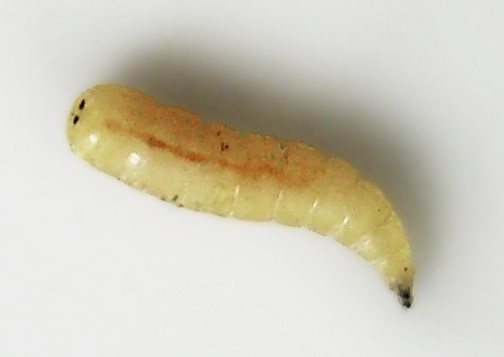
The larvae of common flies deposited in the external environment are harmless to humans. The danger is that if they are swallowed with food, intestinal myiases will develop (inflammation of the intestines caused by the introduction of a worm into its wall). In all other cases, fly larvae can even be useful.
They are recognized by official medicine as an effective means of cleaning foci of necrosis on the human body. Worms are launched into trophic ulcers, bedsores, and purulent wounds for quick, high-quality sanitation. They eat away all dead tissue without touching healthy tissue.
At the same time, the natural antibiotic seraticin and the anti-inflammatory substance allantoin are released - this is necessary for their own safety among bacteria.
But there are insects that deliberately lay eggs under the skin of humans, animals, and rodents, causing skin myiases and even damage to internal organs. Flies whose larvae emerge from under the skin include: tumbu, Wohlfartova, and gadflies. The female gadfly is especially dangerous. Her interests include sheep, in whose skin she lays eggs, other animals, as well as people.
Larval development cycle
After fertilization, eggs take several days to form inside the female. In viviparous flies, this process is always longer by 2-3 days. After laying in a favorable environment, the worms are able to hatch in 2 days. Laying begins at the end of March and lasts until mid-autumn.
On a note!
Fly larvae are called maggots. This term was given to the unpleasant creatures due to the rapid growth, like yeast dough, which is called sourdough. Maggots move quickly, feed constantly, and grow every day. During 10 days of active development, the larvae increase in size from 1 mm to 13 mm.
Externally, the maggot looks like a worm. The color is off-white or yellowish. Has no legs, no head division. On one side the body is pointed, in this part the oral apparatus is located, on the other it is cut off. They are moved using special hooks, they are initially fixed, then pulled up.
The larvae, depending on temperature conditions, develop from 10 to 20 days. During this time, about 4 moults pass. They periodically shed their old chitinous cover and increase in size. A photo of the fly larva is presented below.
At the last stage, pupation occurs. Maggots look for a dry, cool place or burrow into the soil. The body hardens and becomes motionless. Within three days, an adult fly appears, ready for fertilization. The entire life cycle of insect development from egg to adult takes on average 15 days. New generation flies hatch up to 20 times throughout the warm season.
Appearance and internal structure
At first glance, the body structure of a fly seems simple, but in fact, many institutes have been studying these insects for a long time. The body of a fly consists of three parts: head, thorax and abdomen. The lower part of the head has a yellow tint. The following organs are located on it:
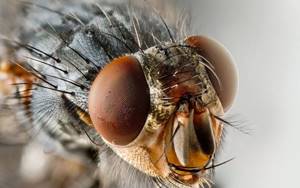
- Eyes. In the fly they are quite large and consist of many small simple eyes that form a faceted network. The image obtained using facets has the appearance of a mosaic.
- Oral apparatus. Insects have powerful jaws and a proboscis. Food enters through the lobes of the upper and lower lips. A large number of tubules connect at the central point of the proboscis. In species that feed on blood, the structure of the oral apparatus contains sharp plates with which the insect pierces the skin of the prey.
- Mustache. This organ helps to navigate in space and smell. The antennae of females and males may differ.
The chest has three segments, the second segment being the most developed. On the chest there are 3 pairs of limbs, which consist of 5 segments. The legs of flies are equipped with developed muscles, claws and suckers. When the fly walks, the pads of its feet secrete a sticky liquid. The paws perform another function - they analyze the quality and taste of food.
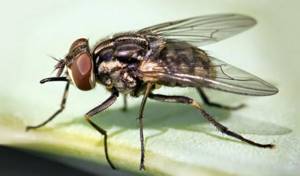
The front pair of wings is well developed, has a membranous structure, the hind wings are deformed and form halteres. With the help of these appendages, the fly can hover in the air and maintain balance.
The cylindrical abdomen consists of 10 segments. The chitinous shell of flies tends to stretch when saturated and during pregnancy.
The most important internal organs are located in the abdomen. The reproductive system is represented by ducts, accessory glands, as well as eggs or testes, depending on the gender of the individual. External appendages differ from species to species.
Females lay clutches of eggs; their number per clutch can range from 70 to 150, depending on the species. In the family of corpse flies there are viviparous ones.
The digestive system is represented by the goiter, intestines, Malpighian vessels and excretory tubules. Food is digested before absorption; for this, the insect introduces a special digestive secretion into it.
The respiratory organs include a large number of tracheae, which are distributed throughout the body. Their opening to the outside is ensured by spiracles.
The brain is made up of many neurons. The circulatory system includes the heart, aorta, pterygoid muscle and dorsal vessel. Blood is colorless and transports nutrients.
Feeding maggots
Synanthropic insects feed on decaying organic matter and sour juices. Their food source is human food, crumbs, garbage in a trash can, feces, rotting vegetables, fruits, and plants. The same food is necessary for the larvae.
Blowflies develop on dead, rotting tissues of animals and humans, as well as in feces, manure, pus, and garbage cans. The larvae help the corpses decompose, thereby bringing extreme benefits. At the last stage of their development, they burrow into the soil and pupate.
Fly larvae do not have a digestive system; they absorb already digested food. To do this, they initially release a caustic, aggressive chemical that dissolves any organic tissue, after which the prepared food is absorbed.
Interesting!
Maggots live in an extremely dangerous environment, which is teeming with pathogens. They themselves do not get sick, they produce the strongest antibiotic - seraticin, to which pathogens are not able to develop immunity. The larvae stop the rotting of tissues, so they are used in medicine to treat poorly healing wounds. Maggots are specially raised under sterile conditions.
Are there poisonous flies?
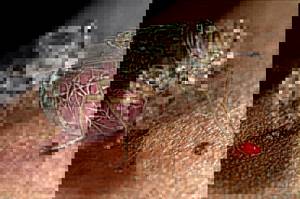
There are no poisonous species in our country. The tsetse fly, which belongs to the genus of African flies, is considered the most poisonous. This genus includes 23 species, including the tsetse fly, they are dangerous to humans, but live only in African countries. Poisonous pests can be found in swampy areas.
The poisonous fly has a stinging proboscis and feeds mainly on the blood of farm animals. If it bites a person, he develops “sleeping sickness.” The venom of the African fly destroys the central nervous system, the victim becomes paralyzed and dies.
